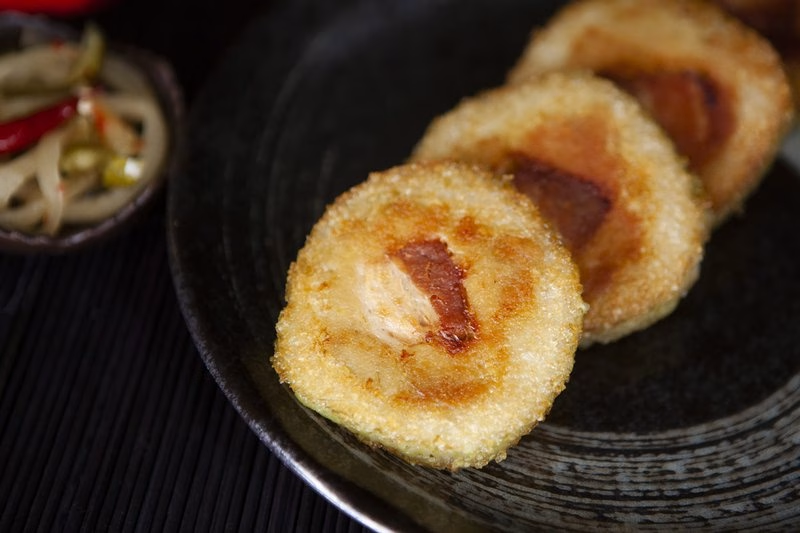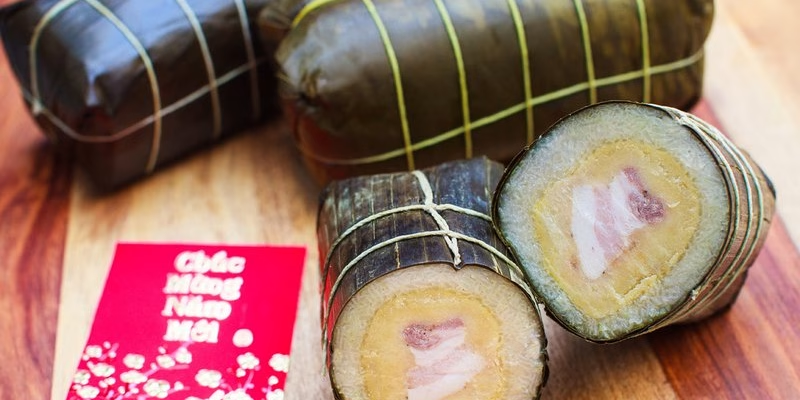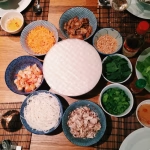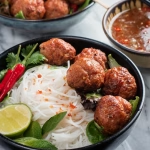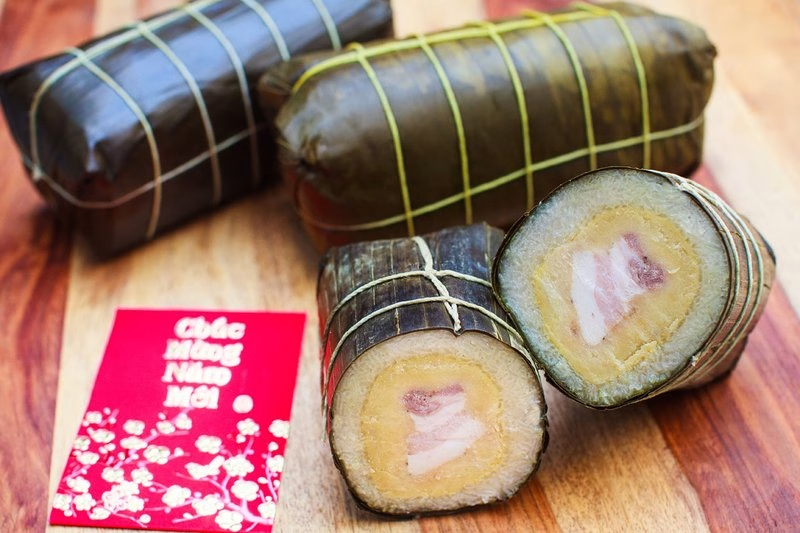
Introduction
Banh Tet is not just a cake; it’s a heartfelt symbol of Vietnamese culture, especially during the Lunar New Year celebrations. This traditional sticky rice cake, filled with mung beans and pork, brings families together, evoking feelings of warmth and nostalgia. Its rich layers of flavors and unique texture make it a beloved treat, enjoyed not just during festive seasons but also as a comforting snack throughout the year.
Did you know that Banh Tet dates back to ancient times? It embodies the essence of the earth and sky, showcasing the harmonious relationship between people and nature. In this article, you’ll learn how to make Banh Tet at home, including the essential ingredients, step-by-step instructions, pro tips, and even some nutritional information. Get ready to embark on a culinary adventure that will not only tantalize your taste buds but also enrich your understanding of Vietnamese culture!
Ingredients
To create your own Banh Tet, you’ll need the following ingredients. Here’s a handy table to make it easy!
| Ingredient | Measurement | Description |
|---|---|---|
| Glutinous Rice | 500g | Key component providing that sticky texture which is essential for Banh Tet. |
| Mung Beans | 200g | These soft, split beans lend a mildly sweet flavor and creamy texture. |
| Pork Belly | 300g | Fatty and tender, pork belly enriches the filling with savory goodness. |
| Banana Leaves | 4 leaves | Essential for wrapping, they impart a subtle aroma during cooking. |
| Salt | 1 teaspoon | Enhances flavors and balances the sweetness of the mung beans. |
| Black Pepper | 1/2 teaspoon | Adding a touch of spice, it complements the savory filling perfectly. |
Step-by-Step Instructions
Making Banh Tet is a rewarding journey that requires some patience. Here’s how you can do it:
- Step 1: Soak the Ingredients – Begin by soaking the glutinous rice and mung beans separately in water for at least 6 hours or overnight. This softens them and prepares them for the cooking process.
- Step 2: Prepare the Filling – While the rice and beans soak, chop the pork belly into small pieces. In a bowl, mix the pork with salt, and black pepper, allowing it to marinate for a flavor boost.
- Step 3: Cook the Mung Beans – Drain the mung beans, then steam them for about 20-25 minutes until soft. Mash them lightly and season with a pinch of salt.
- Step 4: Assemble the Banh Tet – Lay the banana leaves flat. Place a layer of glutinous rice (about 1/3 of the total) at the base, followed by a layer of mung beans, the marinated pork, and then another layer of mung beans. Top with the remaining glutinous rice to seal the filling.
- Step 5: Wrap the Cake – Fold the banana leaves over the filling firmly and tie them with string to secure the shape.
- Step 6: Steam the Banh Tet – Place the wrapped cakes in a steamer and steam for about 6-8 hours. This slow cooking process ensures all the flavors meld beautifully.
- Step 7: Cool and Serve – Once cooked, let the Banh Tet cool down before cutting it into slices. Serve your homemade Banh Tet with pickled vegetables or a cup of tea for a delightful experience.
Pro Tips
– **Select Quality Banana Leaves**: Fresh leaves enhance the aroma; avoid any that are too brittle or old.
– **Experiment with Fillings**: While traditional recipes use pork, feel free to try out variations like chicken or vegetarian options with mushrooms.
– **Tightly Wrap**: Ensure the cake is tightly wrapped to prevent water from seeping in during steaming.
– **Cool Completely**: Allow the Banh Tet to cool before slicing to maintain its shape and texture.
– **Serve with Dipping Sauces**: A sweet soy sauce or a tangy chili dip elevates the flavors of this dish.
Nutritional Information
Here’s a quick look at the nutritional value of one serving of Banh Tet:
| Nutrient | Amount per Serving |
|---|---|
| Calories | 320 |
| Protein | 10g |
| Carbohydrates | 56g |
| Saturated Fat | 5g |
| Fiber | 3g |
| Cholesterol | 30mg |
| Sugars | 1g |
| Fat | 10g |
FAQs
What is the best way to store Banh Tet?
Store Banh Tet in the refrigerator, wrapped in plastic wrap or in an airtight container for up to a week. You can also freeze it for longer storage.
Can Banh Tet be made vegan or gluten-free?
Absolutely! You can replace pork with mushrooms for a vegan version. Use gluten-free rice for those with dietary restrictions.
What are the best side dishes to serve with Banh Tet?
Pickled vegetables and dipping sauces, like sweet soy, pair wonderfully with Banh Tet, enhancing its flavors.
How long does it take to prepare Banh Tet?
Preparation takes about 30 minutes, but don’t forget the soaking time for the rice and mung beans, which can be several hours.
Can I freeze Banh Tet for later?
Yes, freezing is a great option! Wrap it tightly to prevent freezer burn and enjoy it later.
Is Banh Tet served hot or cold?
Banh Tet can be enjoyed either hot or cold, depending on your preference. Many people love it warm!
What variations of Banh Tet are popular?
While the classic version features mung beans and pork, there are countless variations including vegetarian options and sweet versions filled with coconut and mung beans.
How can I enhance the flavor of my Banh Tet?
Adding a bit more seasoning to your filling and experimenting with different types of meat or vegetables can take your Banh Tet to the next level!
Making Banh Tet at home isn’t just about the food; it’s about experiencing a piece of Vietnamese culture and history. From gathering ingredients to the joy of sharing with family, this traditional dish is more than just a recipe—it’s a celebration.
So, why not gather your loved ones and give this Banh Tet recipe a try? You’ll be amazed at how fulfilling it is to create something so rich in tradition. *Tried this Banh Tet recipe? Let us know your experience in the comments!*
